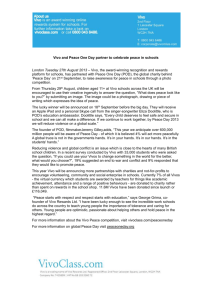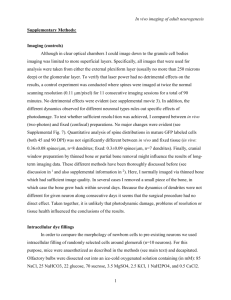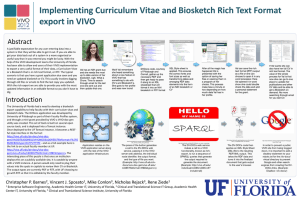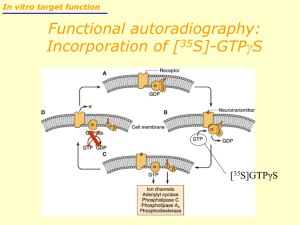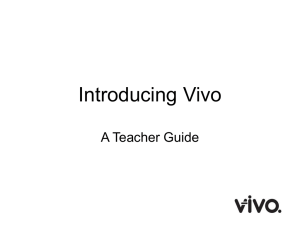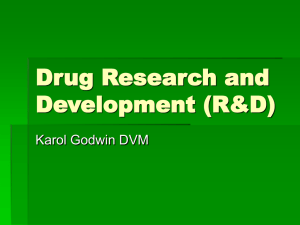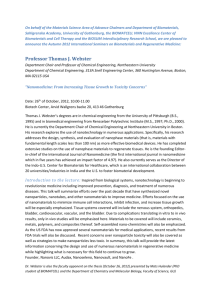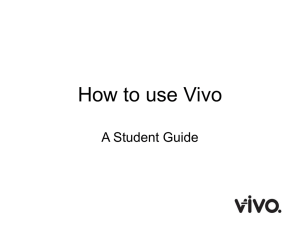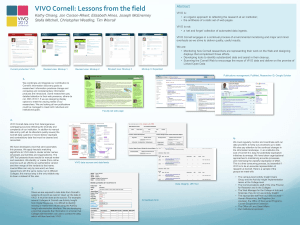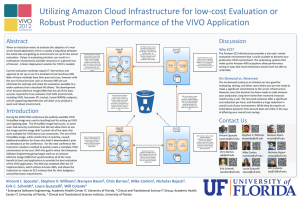eThority as a Business Intelligence Solution for VIVO Data
advertisement
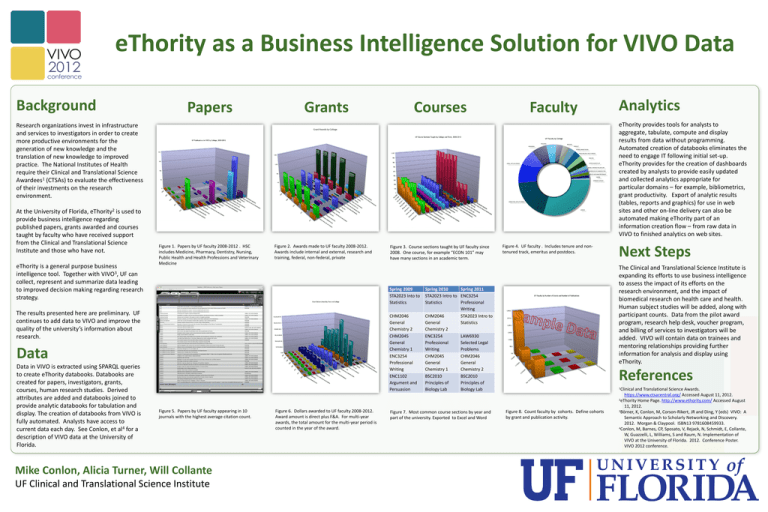
eThority as a Business Intelligence Solution for VIVO Data Background Papers Grants Courses Faculty eThority provides tools for analysts to aggregate, tabulate, compute and display results from data without programming. Automated creation of databooks eliminates the need to engage IT following initial set-up. eThority provides for the creation of dashboards created by analysts to provide easily updated and collected analytics appropriate for particular domains – for example, bibliometrics, grant productivity. Export of analytic results (tables, reports and graphics) for use in web sites and other on-line delivery can also be automated making eThority part of an information creation flow – from raw data in VIVO to finished analytics on web sites. Research organizations invest in infrastructure and services to investigators in order to create more productive environments for the generation of new knowledge and the translation of new knowledge to improved practice. The National Institutes of Health require their Clinical and Translational Science Awardees1 (CTSAs) to evaluate the effectiveness of their investments on the research environment. At the University of Florida, eThority2 is used to provide business intelligence regarding published papers, grants awarded and courses taught by faculty who have received support from the Clinical and Translational Science Institute and those who have not. eThority is a general purpose business intelligence tool. Together with VIVO3, UF can collect, represent and summarize data leading to improved decision making regarding research strategy. Figure 1. Papers by UF faculty 2008-2012 . HSC includes Medicine, Pharmacy, Dentistry, Nursing, Public Health and Health Professions and Veterinary Medicine Figure 2. Awards made to UF faculty 2008-2012. Awards include internal and external, research and training, federal, non-federal, private Figure 3. Course sections taught by UF faculty since 2008. One course, for example “ECON 101” may have many sections in an academic term. Spring 2009 STA2023 Into to Statistics The results presented here are preliminary. UF continues to add data to VIVO and improve the quality of the university’s information about research. CHM2046 General Chemistry 2 CHM2045 General Chemistry 1 ENC3254 Professional Writing ENC1102 Argument and Persuasion Data Data in VIVO is extracted using SPARQL queries to create eThority databooks. Databooks are created for papers, investigators, grants, courses, human research studies. Derived attributes are added and databooks joined to provide analytic databooks for tabulation and display. The creation of databooks from VIVO is fully automated. Analysts have access to current data each day. See Conlon, et al4 for a description of VIVO data at the University of Florida. Analytics Figure 5. Papers by UF faculty appearing in 10 journals with the highest average citation count. Mike Conlon, Alicia Turner, Will Collante UF Clinical and Translational Science Institute Figure 6. Dollars awarded to UF faculty 2008-2012. Award amount is direct plus F&A. For multi-year awards, the total amount for the multi-year period is counted in the year of the award. Figure 4. UF faculty . Includes tenure and nontenured track, emeritus and postdocs. The Clinical and Translational Science Institute is expanding its efforts to use business intelligence to assess the impact of its efforts on the research environment, and the impact of biomedical research on health care and health. Human subject studies will be added, along with participant counts. Data from the pilot award program, research help desk, voucher program, and billing of services to investigators will be added. VIVO will contain data on trainees and mentoring relationships providing further information for analysis and display using eThority. Spring 2010 Spring 2011 STA2023 Intro to ENC3254 Statistics Professional Writing CHM2046 STA2023 Intro to General Statistics Chemistry 2 ENC3254 LAW6930 Professional Selected Legal Writing Problems CHM2045 CHM2046 General General Chemistry 1 Chemistry 2 BSC2010 BSC2010 Principles of Principles of Biology Lab Biology Lab Figure 7. Most common course sections by year and part of the university. Exported to Excel and Word Next Steps References Clinical and Translational Science Awards. https://www.ctsacentral.org/ Accessed August 11, 2012. 2eThority Home Page. http://www.ethority.com/ Accessed August 11, 2012. 3Börner, K, Conlon, M, Corson-Rikert, JR and Ding, Y (eds) VIVO: A Semantic Approach to Scholarly Networking and Discovery. 2012. Morgan & Claypool. ISBN13 9781608459933. 4Conlon, M, Barnes, CP, Sposato, V, Rejack, N, Schmidt, E, Collante, W, Guazzelli, L, Williams, S and Raum, N. Implementation of VIVO at the University of Florida. 2012. Conference Poster. VIVO 2012 conference. 1 Figure 8. Count faculty by cohorts. Define cohorts by grant and publication activity.


